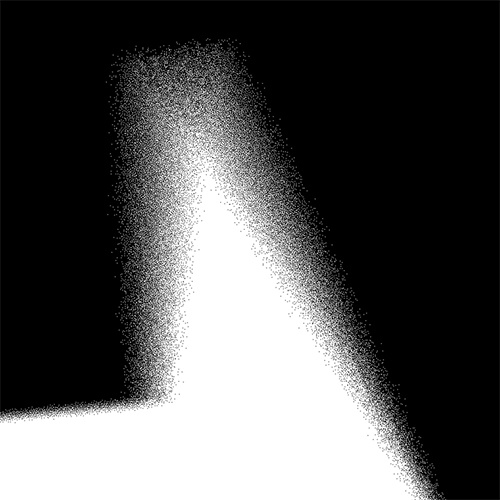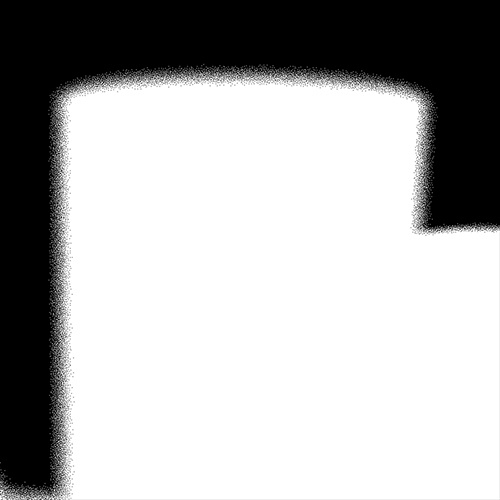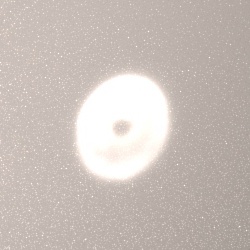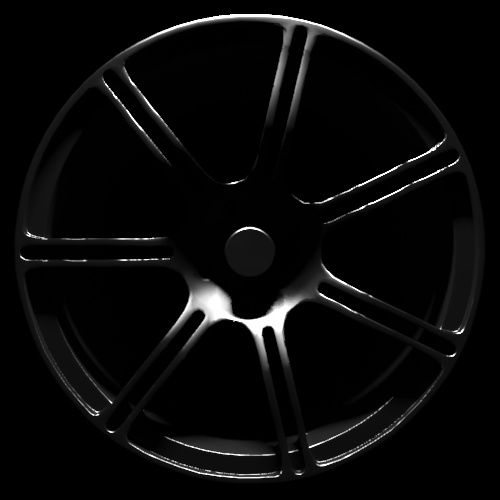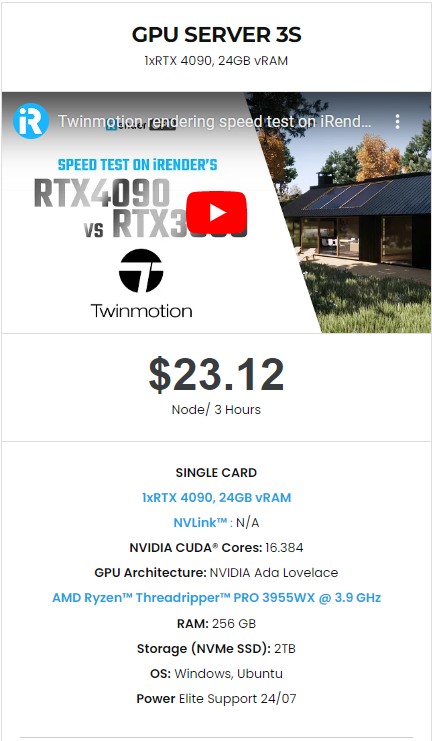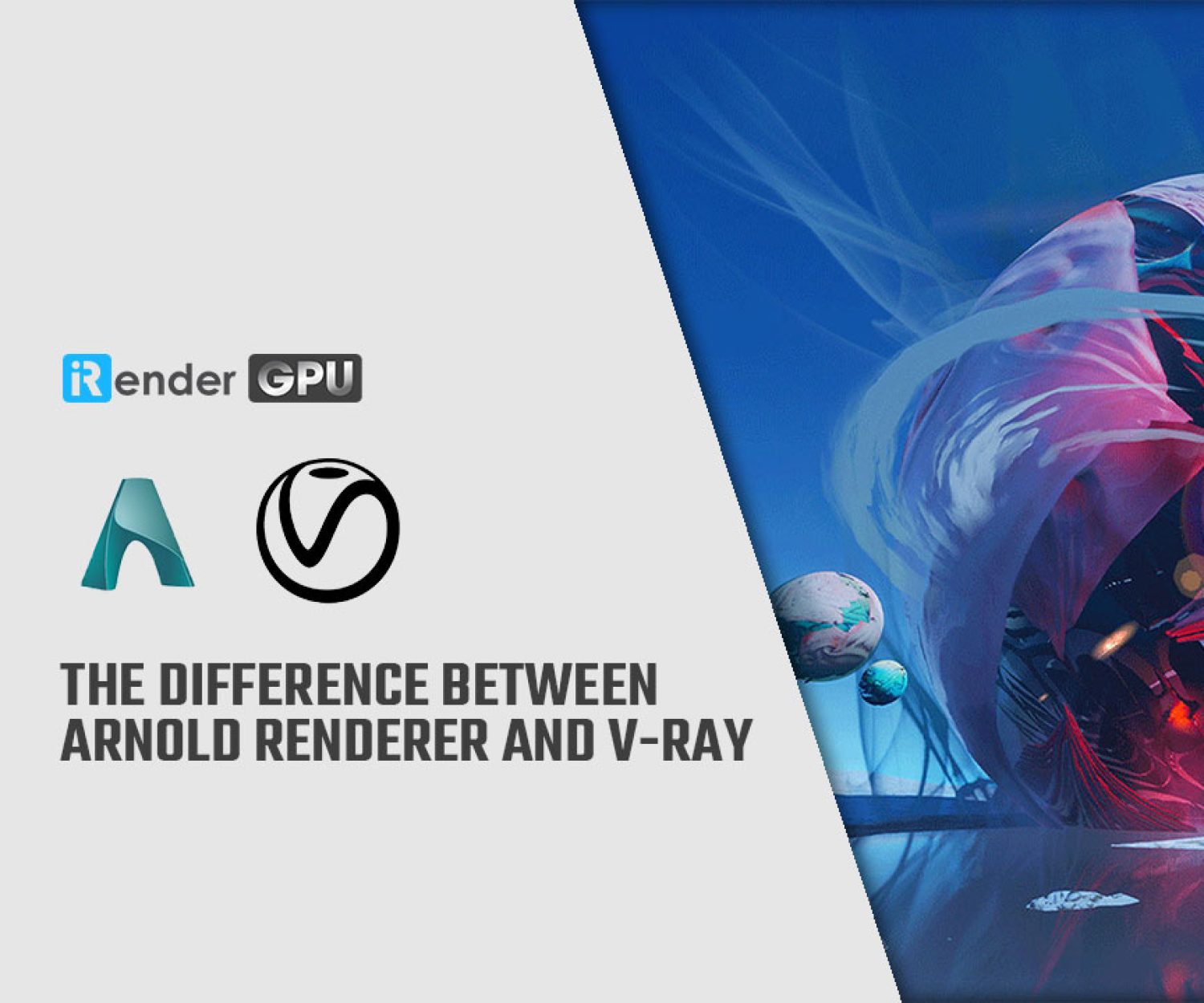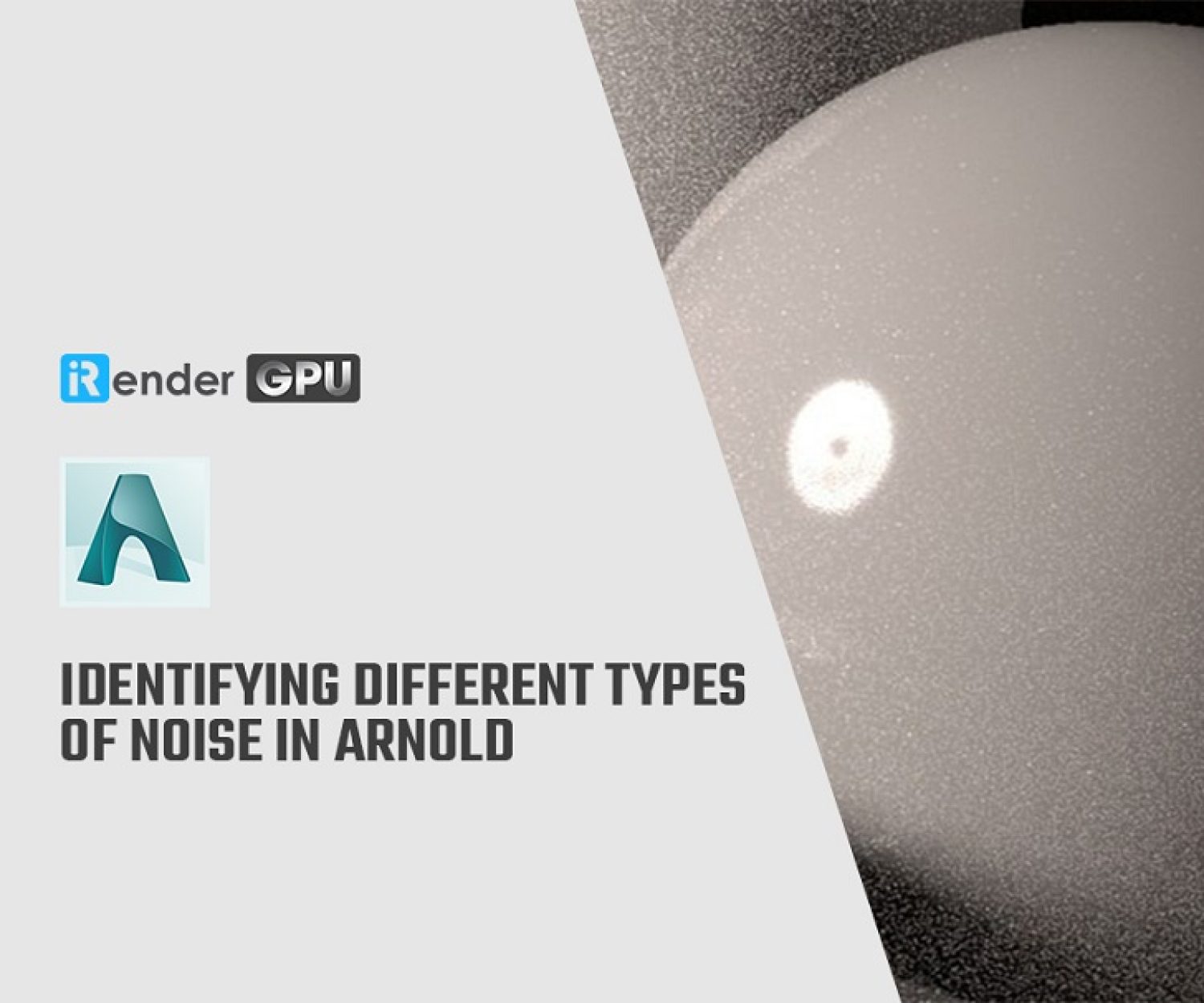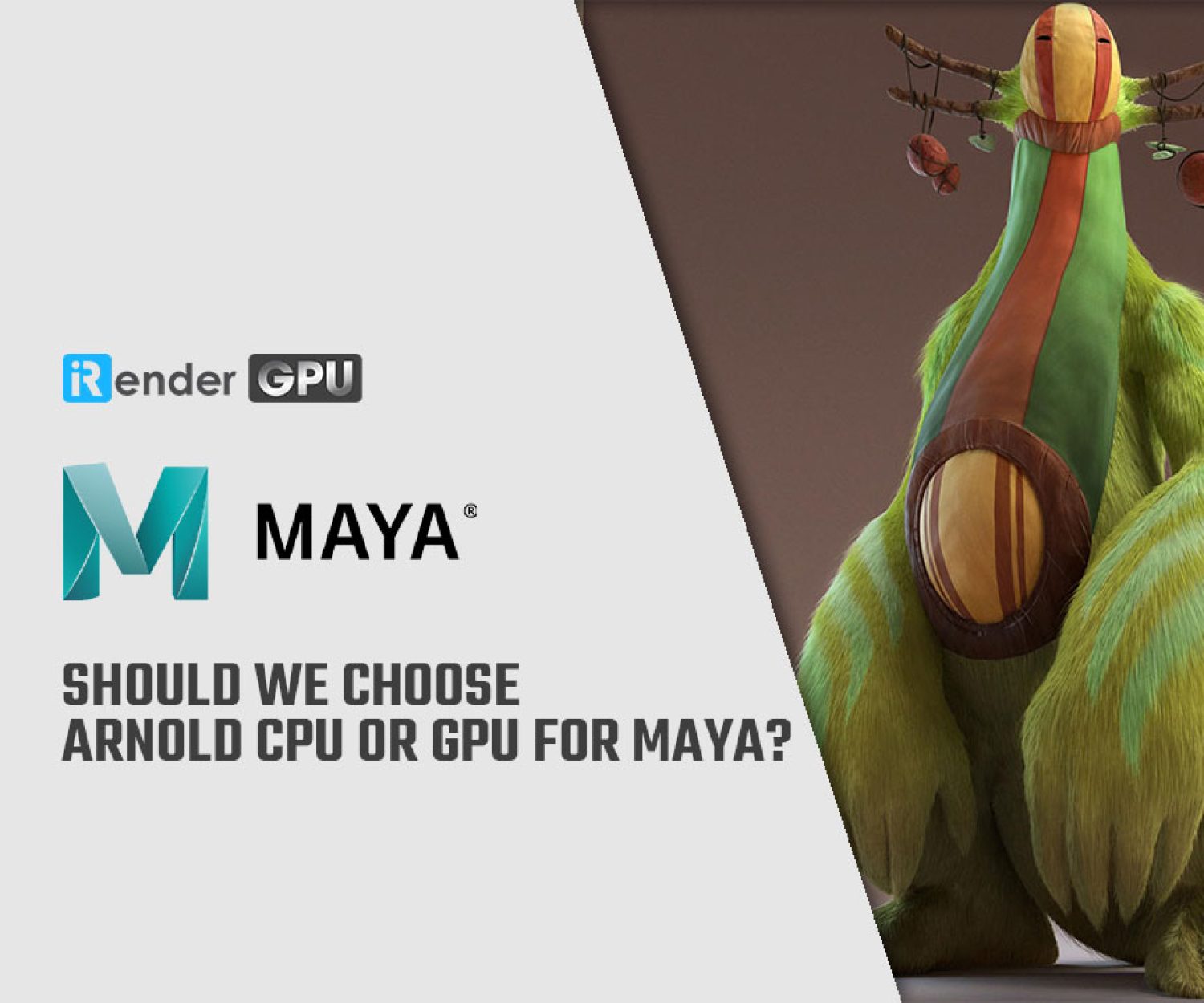Identifying different types of noise in Arnold
Arnold is an advanced Monte Carlo ray tracing renderer for many DCC application such as Maya, Cinema 4D, Houdini, 3ds Max, Katana, etc. It’s often used for feature-length CGI animation and big-budget visual effects because of its high-quality render results. To be able to serve and produce such result, one of the things you need to care about is noise. In this article, let’s identify different types of noise in Arnold with iRender.
Different types of noise in Arnold
Motion Blur and Depth of Field Noise
You may encounter motion blur noise in the trails of moving geometry. With DOF noise, it appears in the out of focus areas.
Motion Blur
Depth Of Field
You can look at alpha channel to see if noise is present in depth of field or motion blur.
What causes motion blur and depth of field noise? Actually it comes from insufficient camera rays and can only be solved by increasing Camera (AA) samples. When you increase Camera (AA) samples, the other samples will also be increased. Therefore you need to decrease them to compensate.
Increasing the Camera (AA) samples will have a dramatic effect on render times. If motion blur or DOF is not a problem, then Camera (AA) samples should be the last consideration for fixing the other noise types.
Diffuse Noise
Indirect diffuse noise is a common type of noise. You can check this noise by seeing the indirect diffuse AOV, or set diffuse samples to 0 which will turn off indirect diffuse. If the noise disappears, then it is created by indirect diffuse.
When diffuse samples are more than zero, camera rays intersecting with diffuse surfaces fire indirect diffuse rays. The rays are fired in random directions within a hemispherical spread. Noise is created when there are insufficient rays to resolve the range of values from the environment. You can remove the noise by increasing diffuse samples.
Specular Noise
Indirect specular noise occurs when the specular_roughness parameter is more than 0. You can check this noise by seeing the indirect specular AOV, or set specular samples to 0 which will remove blurred reflections. If the noise disappears, then it is created by indirect specular.
Indirect specular noise is caused by a lack of specular samples. These samples control the number of rays fired when computing the reflected indirect-radiance integrated over the hemisphere weighted by a specular BRDF. The exact number of rays is the square of this value. You can increase this number to reduce the indirect specular noise. Note that the sampling is done for each Camera (AA) sample, so high values for both Camera (AA) samples and specular samples will cause slow renders.
Transmission Noise
You can notice transmission noise in the blurred refraction of a transparent object when specular_roughness is nore than 0. You can confirm this by checking the transmission AOV, or set transmission samples to 0 which will remove blurred refractions. If the noise disappears, then it is created by transmission.
A lack of transmission samples can cause Transmission noise. Transmission samples control the number of samples used to simulate the microfacet-based glossy refraction evaluations. The exact number of rays is the square of this value. If you increase this number, it can reduce noise in shaders using transmission.
SSS Noise
Subsurface-scattering (SSS) noise will occur on surfaces that are using the standard_surface shader with SSS enabled. You can check the SSS AOV to confirm this. To remove the SSS noise, increase sss_samples.
Direct Specular and Shadow Noise
A lack of light samples can cause direct specular and shadow noise. Normally you need a small number of samples to remove direct specular noise, but for removing shadow noise, you need more samples. The larger the radius a light source has, the softer the shadows will be, and therefore more samples will be required to remove shadow noise.
Shadow noise is often mixed up with indirect diffuse noise, particularly for lights with large radii because their shadows will be softer. You can look at the direct_diffuse AOV to see if the shadows are noisy. Alternatively, if you set diffuse samples and specular samples to 0, it helps remove GI and allow you to single out the direct lighting contribution. It can be tricky to identify direct specular noise as it could be mistaken for indirect specular noise. Direct specular is the reflection of the light itself on the surface. This will help you distinguish it from the reflections of surrounding objects based on color and intensity.
You can also meet noise on the specular highlights of thin geometry that use a shader with a high specular_weight value. To reduce this effect to a point, increase the number of Camera (AA) samples. However, even with high Camera (AA) samples, anti-aliasing artifacts can appear. Increasing the specular_roughness value helps to reduce this type of noise. Increasing the size of the light and reducing its intensity can also help in these situations.
Atmospheric Scattering Noise
Atmosphere_volume noise will show up within the shadowed regions of a beam of light. A lack of samples in the atmosphere_volume shader might resut to this noise. The samples are distributed according to the volume density. More samples will refine the quality of the solution.
Fireflies and Sparks
Fireflies ( bright ‘spike’ type noise) are typically generated from the reflection of a strong light on a shiny, low-roughness glossy surface. Usually, hundreds of samples participate in a final pixel color. If one of those is a high-valued specular ray (coming from the reflection of a strong light), then there will be many samples with low values and a single sample with a value in the thousands. That single sample will make the whole pixel become white (a “firefly”). This kind of noise can be removed by sample clamping. If you clamp high sample values, a single stray sample will now be diluted and not affect the final color as much. However, this will affect the final dynamic range of the render, you need to use it carefully.
What also causes fireflies? Fireflies can also be caused by indirect diffuse illumination from very bright hotspots, in particular when the light sources are very close (or even touch) nearby geometry, such as a light’s cabinet or enclosure. The inverse square decay in the light will make those nearby surfaces extremely bright. You can add a light decay filter with a very low near start value to avoid samples very close to the light. Again, be careful when using this.
Other Considerations
-
-
-
- Noise could come from things not visible in the render (behind the camera).
- Noise could be caused/exacerbated by non-energy conserving shaders, networks or settings.
- You can reduce noise byremoving the cause and faking it with special lights. For example, a character whose face is lit by bounce light only: it will be much less noisy to add a specific bounce light.
- Arnold can remove noise easily when it knows where lights are, by sampling the lights directly, but will have problems if there are bright “directional” patches not tagged as lights that contribute significantly to the scene’s lighting.
-
-
How to identify noise and adjust the samples?
To identify noise in your renders, it is useful to render and view AOVs. This enables you to isolate the type of noise and adjust the relevant samples. A general guide to identifying and prioritizing the order where common noise types can be found in the table below. Note that this is a general guide and that every scene is different.
|
Noise Visible in |
Samples to Adjust |
|
Alpha channel |
Camera (AA) samples |
|
Indirect Diffuse |
Diffuse samples |
|
Direct Specular (specular noise) |
Light samples |
|
Direct Diffuse (shadow noise) |
Light samples |
|
Indirect Specular |
Specular samples |
|
Transmission |
Transmission samples |
|
SSS (direct and indirect) |
SSS (direct and indirect) samples |
|
Volume |
Volume samples (note that there are also volume samples in lights too) |
iRender - The best cloud rendering for Arnold
This article is to help you to identify different types of noise in Arnold and how to adjust relevant samples to leverage your scene.
If you use Arnold and want to deliver quality and speed, don’t hesitate to check out iRender – the best cloud rendering for Arnold, where you can use the fastest RTX4090 card.
You can refer to this article (How does Autodesk Arnold perform on RTX4090?) to know how Arnold performs on RTX4090. We have many servers from single, dual to multiple GPUs to serve your needs. You can choose from 1/2/4/6/8 x RTX 4090 or RTX 3090 as you want, and they can render your Arnold project in a lightning speed.
We are not only providing you the most powerful graphics card, but also the same level of hardware, such as AMD Ryzen Threadripper processor, 256 GB RAM, 2 TB of storage (NVMe SSD). A powerful processor is for low loading time, snappy viewport, 256GB of RAM is for huge projects, and 2TB of storage is for storing your renders.
Let’s watch a video of a Maya and Arnold 2023 project rendered on our multi RTX 3090s server. The project is inspired by the tragedy of king Midas, who asked the gods for the power of turning into gold anything he touched, but then by accident turned his own daughter into a golden statue.
It’s about more than 1000 frames, with AA Samples: 3, Adaptive samples: max samples: 10, using interactive grooming splines, two cameras.
You can always register now and experience our newest card RTX4090 or RTX3090, and enjoy working smoothly in a customized pipeline like you have always done with your own PC.
We are offering the promotion for new users. For your first transaction within 24 hour since your registration, you will receive a 100% bonus. Contact us via Whatsapp (+84) 916806116 for more support.
Happy rendering!
Source and images: help.autodesk.com
Related Posts
The latest creative news from Arnold Render Farm, Maya Render Farm





